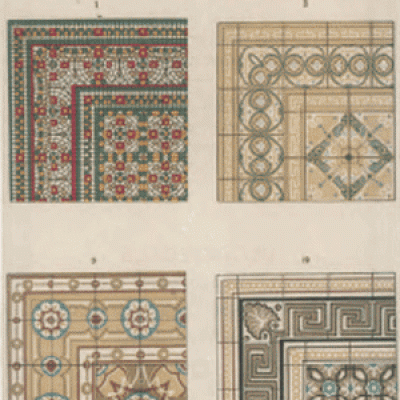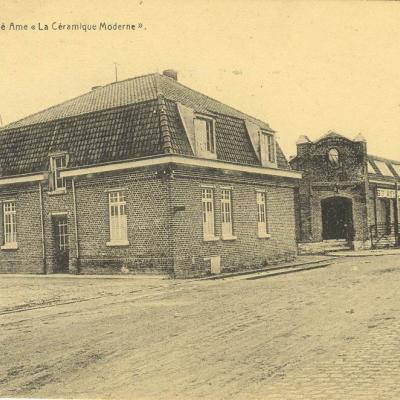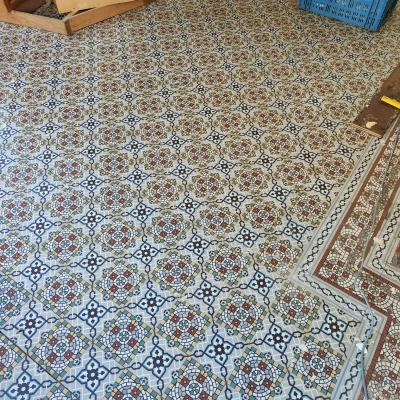A large 16.25m2 Societe Rebaix ceramic floor 1920 - 1930
Dating from the decade of 1920-1930 and reclaimed from a house in renovation in Namur, Belgium, a quality handmade ceramic floor tile with its original triple border tile series for which all four large border corners and eight half size border tiles are available.
This is a quality ceramic of c.14mm thick, 14cm square field & border tiles with half size borders, 14cm x 7cm. The floor has cleaned superbly revealing crisp colours across the damier lay of its two principal field tiles; an ornate faux mosaique tile and a complimentary strongly geometric tile.
The total surface available is c.16.25m2 / 175 sq ft.
The tiles are reverse stamped ‘R’, having been manufactured by Societe Anonyme Ceramiques Moderne, Rebaix, Belgique, a company which commenced producing 16cm sq ceramic tiles just after World War I and we include in the gallery a scan from the original Rebaix catalogue showing one of the field tiles and the accompanying large border tile along with a scan of their factory, now long since closed.
A superb and unique floor which we think would especially be suited to an entrance hallway.
Tile quantities:-
Field tiles – MOTIF – 300 – 6m2 / 64.6 sq ft.
Field tiles – GEOMETRIC – 318 – 6.25m2 / 67.3 sq ft.
Large borders – 95 plus 4 corners – 2m2 / 21.5 sq ft. – 13.9 linear metres / 45.6 linear ft.
Small borders – 190 plus 8 corners – 2m2 / 21.5 sq ft. – 27.8 linear metres / 91.2 linear ft.
NOTE
Antique tiles were most commonly made in single or two tile moulds. Before current computer automation methods their moulds were made my hand and the colour slips mixed by eye. Kiln temperatures could also be variable, as could the firing time. The result is that often tiles display subtle size and thickness variations and there can be tonal variations in colours, owing to the slip mixing and/or firing time. All of this makes these handmade tiles unique and adds to their charm. Some floors display their subtle variations in size and tones, some not, but when photographing we always take a random section of the floor so that it is representative of the whole. A tiler should always dry lay a section of the tiles to familiarise himself with them before starting to fix lay.
CL181







